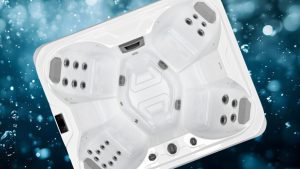
Hot tubs have become a staple of modern UK garden luxury—providing rest, relaxation, and a daily dose of well-being. But to truly enjoy your investment, proper installation is key. Whether you’re upgrading your outdoor space or adding a spa to a new build, this 2025 guide walks you through every step of a safe, long-lasting, and stress-free hot tub installation.
From choosing the right spot to connecting power and water, we’ve got you covered.
Before anything else, you’ll need to decide where your hot tub will live. Get this right, and everything else flows easily.
Accessibility:
Ensure it’s within easy reach of your home, especially in colder months. A short walk across the patio beats a barefoot dash across the lawn in January.
Solid, Level Ground:
Your hot tub needs a stable and flat base that can handle significant weight when filled with water and people. Concrete pads, reinforced decking, or hot tub bases are all good options.
Sunlight & Shade:
UK weather means sun is precious—but too much exposure can age the cover or overheat the tub. A mix of sun and shade works best. Consider pergolas, parasols, or surrounding plants for adaptable cover.
Access to Power and Water:
Place your hot tub near an outdoor power source (ideally a dedicated circuit) and a water tap to make filling and draining easier.
Once you’ve chosen your spot, you’ll need to prepare it properly.
Clear the Area:
Remove any vegetation, debris, or garden clutter. Your surface should be clean, dry, and stable.
Measure Carefully:
Mark out the hot tub’s footprint to check for fit. Leave room around the edges for servicing and cover access.
Base Preparation:
If you’re using a pre-cast concrete base or reinforced decking, ensure it’s built to withstand the weight (typically over 1,500kg when filled). For in-ground or semi-sunk tubs, excavation may be necessary—always consult a pro before you dig.
Whether you’re installing on a patio or deck, check that your structure can support the tub.
Surface Stability:
Inspect the base for cracks, movement, or erosion. If installing on a deck, ensure it meets minimum load requirements for a filled hot tub and people.
Decking Installations:
For raised decks, consult a structural engineer. Reinforcements may be needed to distribute the weight safely.
This is not a DIY job—hot tubs require specialist electrical work to meet UK safety standards.
Hire a Qualified Electrician:
Ensure your installer is certified and familiar with Part P of the UK Building Regulations. Most hot tubs require a dedicated RCD-protected circuit.
Power Supply:
13-amp hot tubs (also known as “plug & play”) can often run from a standard outdoor socket. Higher-spec models usually require a 32-amp feed, which must be professionally installed.
Safety First:
A residual current device (RCD) is essential. Your electrician will test and verify that your hot tub is safely connected and compliant.
Getting water in and out efficiently is vital.
Filling:
An outdoor tap and garden hose are usually sufficient. Be sure to flush the hose for a few minutes to clear any stagnant water before filling.
Draining:
Most hot tubs have a built-in drainage valve. Plan for where the water will go—into a soakaway, drain, or down a nearby slope. Never drain directly into flower beds or areas with poor runoff.
Freeze Protection:
If your tub will be used year-round, consider insulated pipework and frost protection systems. Many tubs now come with built-in winter modes.
While some opt for self-installation, most UK buyers benefit from supplier delivery and setup—especially as many companies offer it free of charge.
Professional Delivery:
Suppliers like Hot Tub Doctors in Blackpool can deliver and position your tub safely—often navigating tight garden paths or side access routes with ease.
Self-Installation (Optional):
If you’re confident with tools and have help, follow the manufacturer’s guide closely. Level the tub, connect your utilities, and triple-check the electrical setup before switching it on.
The hard part’s over—but now comes the regular upkeep that protects your investment.
Balancing the Water:
Test water weekly using test strips or digital meters. Keep pH, alkalinity, and sanitiser levels within recommended ranges.
Sanitising and Shocking:
Use chlorine or bromine to disinfect, and apply shock treatments weekly or after heavy use.
Filter Care:
Clean filters every 2–4 weeks and replace annually. A dirty filter reduces water clarity and strains your pumps.
Visual Checks:
Inspect jets, pumps, and seals every month. Look for leaks, cracks, or unusual sounds.
Your hot tub should be a place to relax—not take risks.
Lockable Cover:
Always use a safety cover when the tub’s not in use—especially around children or pets.
Signage and Guidelines:
Consider signage for guests, including usage tips and maximum capacity. Avoid alcohol, keep long hair tied back, and never use the tub alone if you feel unwell.
GFCI Trips:
Check your Ground Fault Circuit Interrupter (GFCI) monthly to ensure it’s working.
Turn your spa into a sanctuary.
Privacy:
Use trellises, hedges, screens, or outdoor curtains to create a calm, hidden nook.
Lighting:
Solar LEDs, warm string lights, or step lighting can enhance mood and safety.
Comfort:
Add outdoor seating, towel storage, and waterproof accessories to elevate the space.
Installing a hot tub in your UK home doesn’t have to be a headache. With proper planning, professional support, and regular care, your hot tub will provide years of comfort and joy.
If you’re in the North West and ready to begin your hot tub journey, get in touch with the Hot Tub Doctors—trusted experts offering full support from purchase to plunge.
Q1: Do I need planning permission for a hot tub in the UK?
A1: Typically no, unless you’re in a listed building or conservation area. It’s always wise to double-check with your local planning office.
Q2: Can I install a hot tub on decking?
A2: Yes, but only if it’s reinforced to handle the full load. Seek structural advice if unsure.
Q3: How often should I replace the water?
A3: Every 3–4 months for average use. You may need to change it more often with heavy use or poor chemical balance.
Q4: Can I move my hot tub later?
A4: Yes, but it’s a two-person (or more) job and may require lifting gear or professional movers.
Q5: What are the running costs?
A5: For modern insulated tubs, running costs in the UK typically range from £1 to £1.50 per day—more in winter, less in summer.
Q6: Is a 13-amp hot tub powerful enough?
A6: Yes, for many users. They’re perfect for couples or small families. For more jets and faster heating, a 32-amp model might suit you better.




Our newsletter will let you know about special offers, coupons and seasonal tips and advice.
